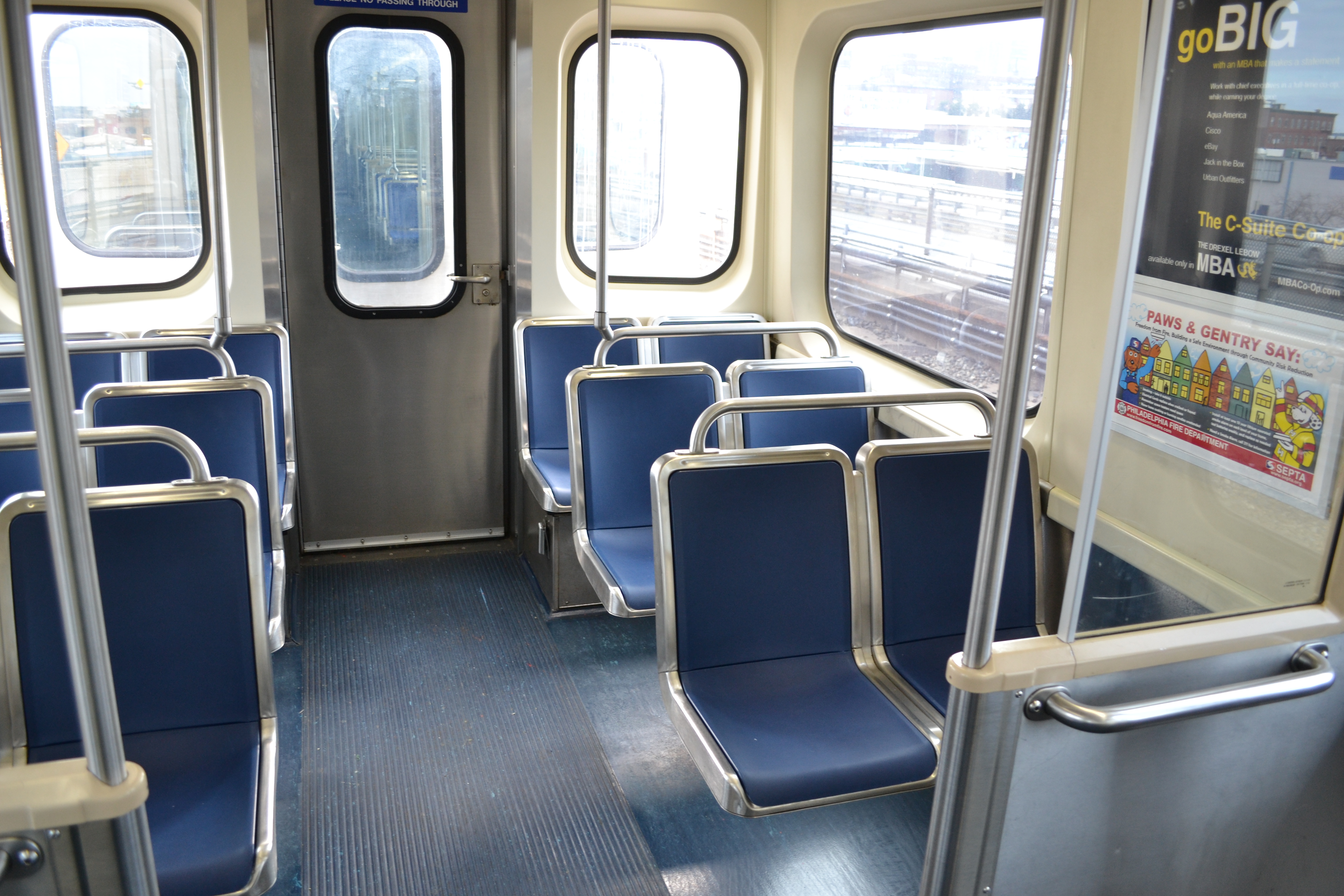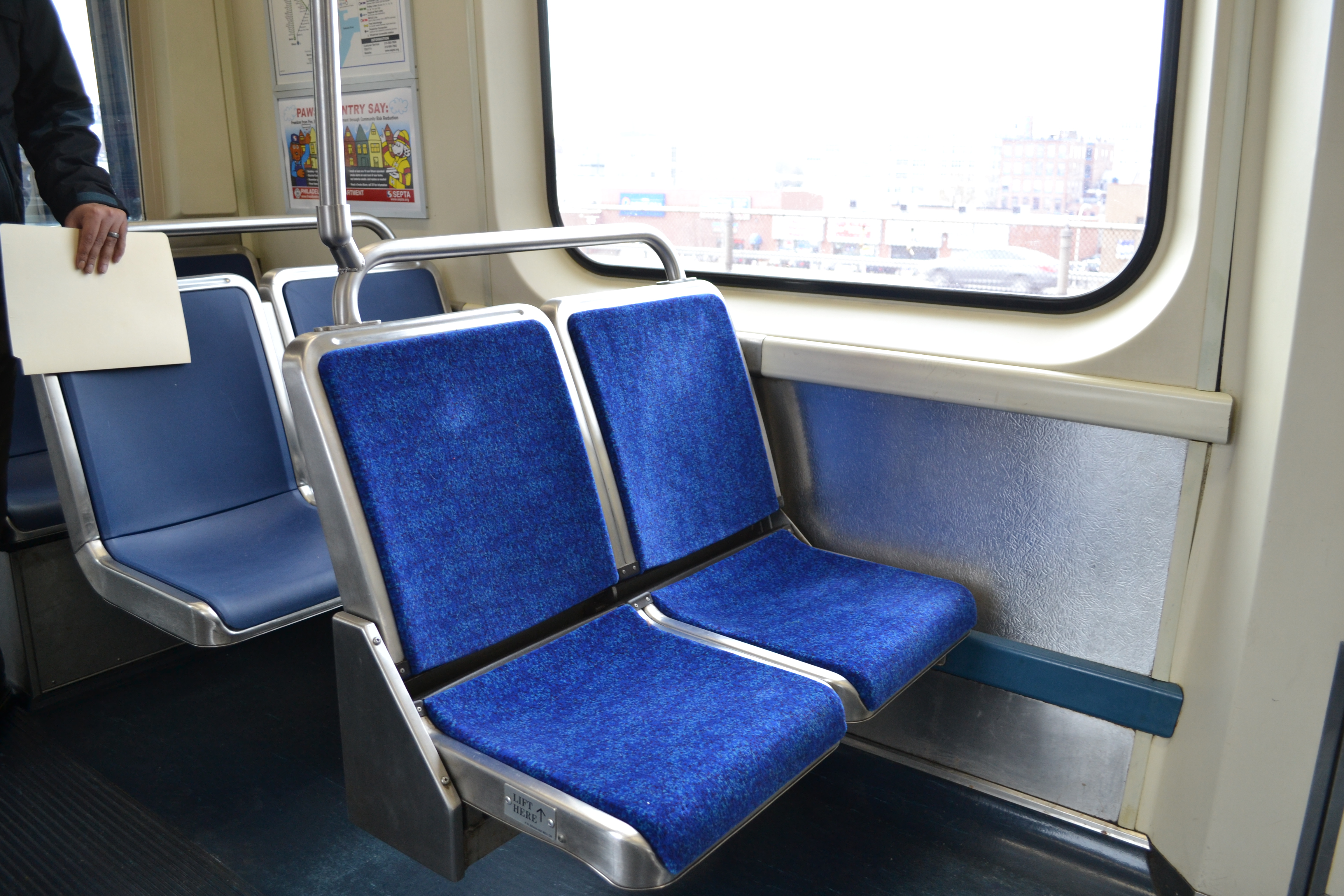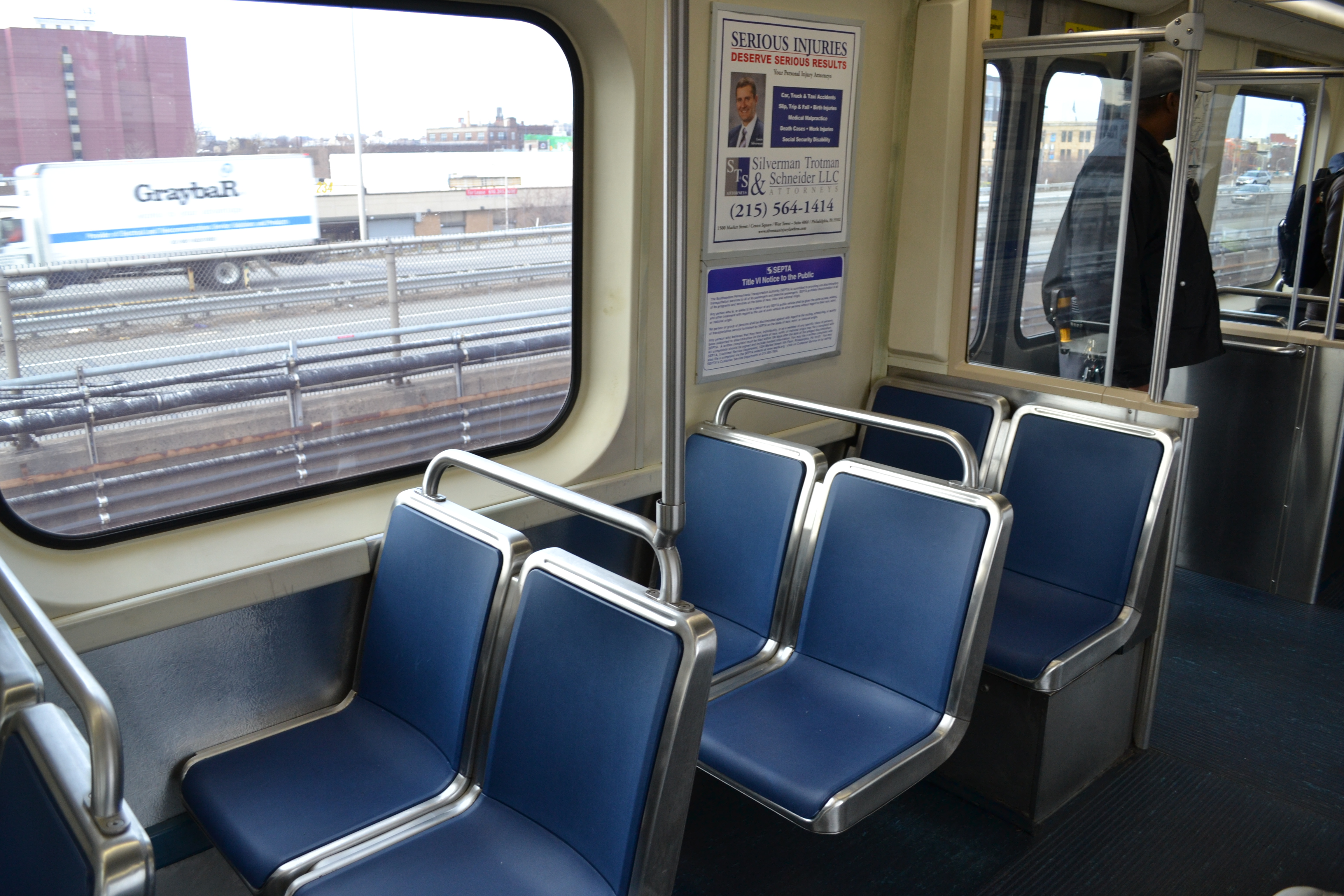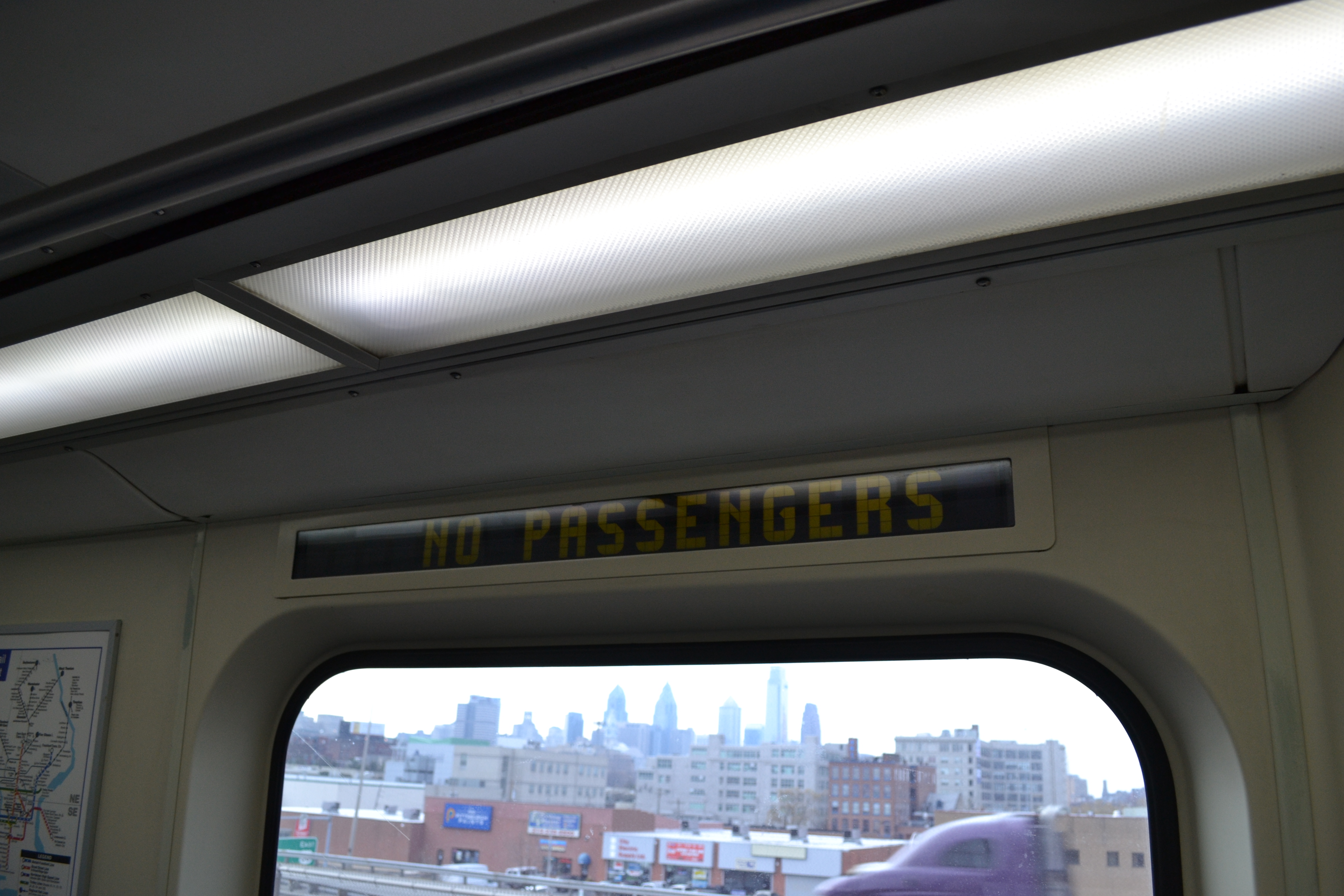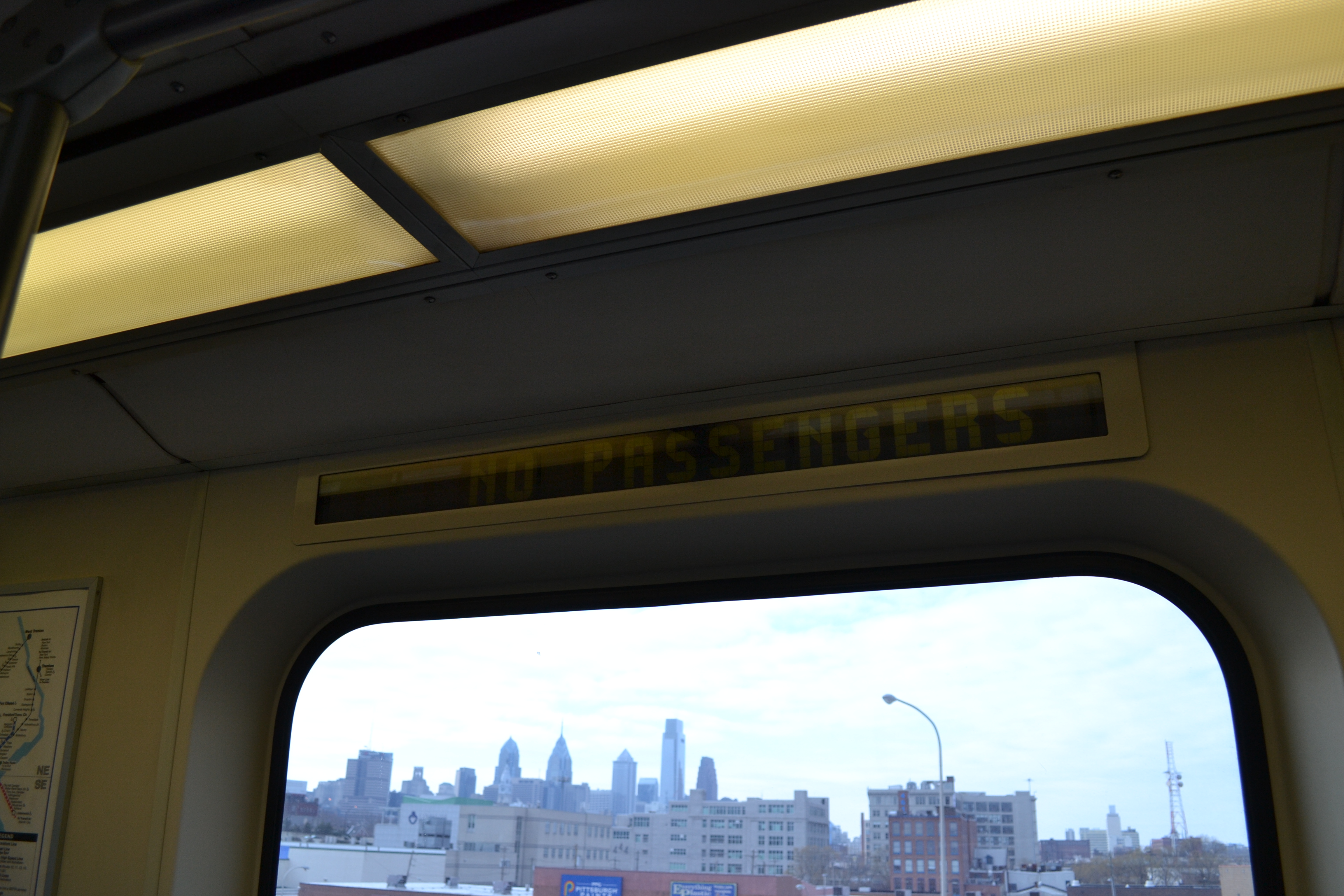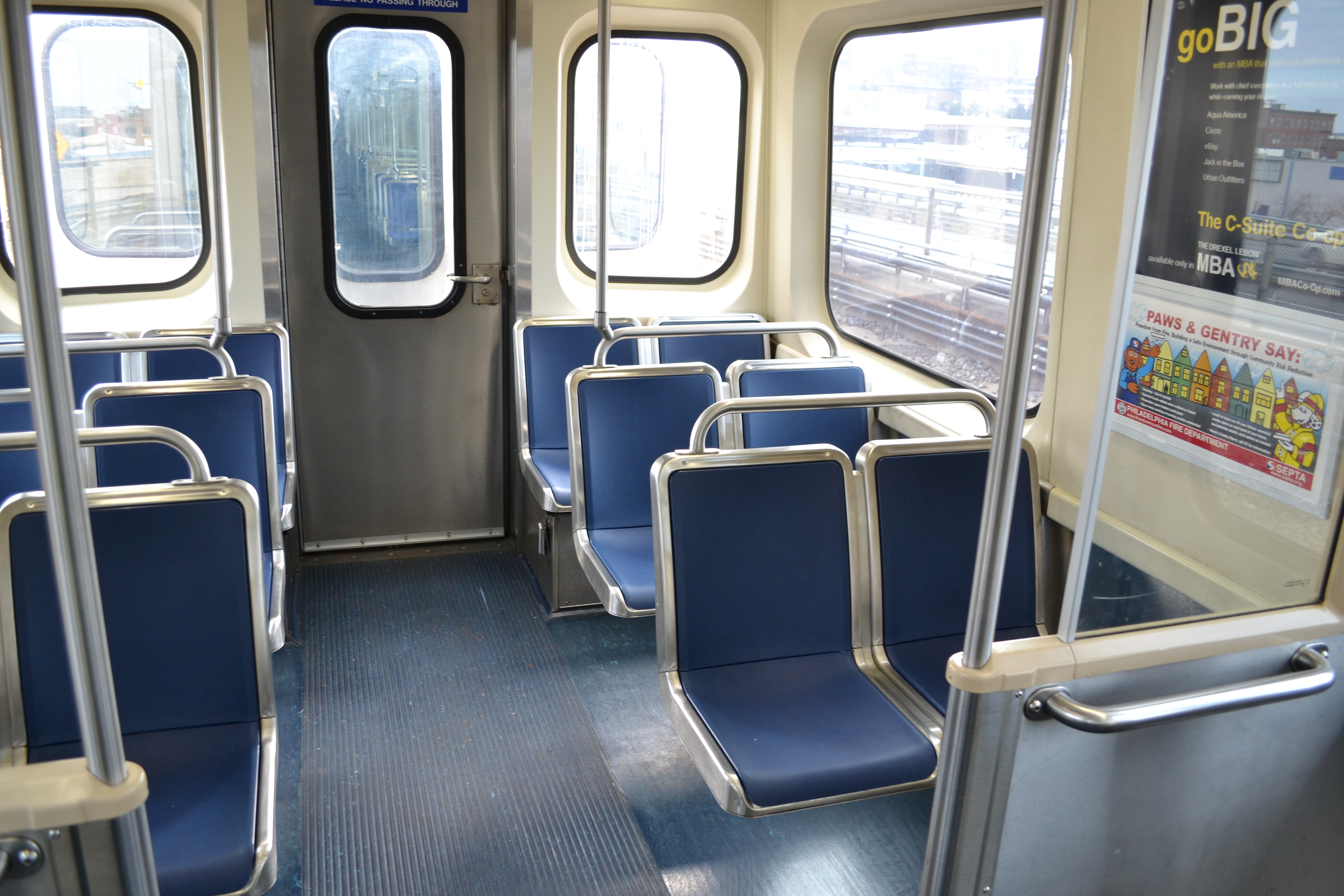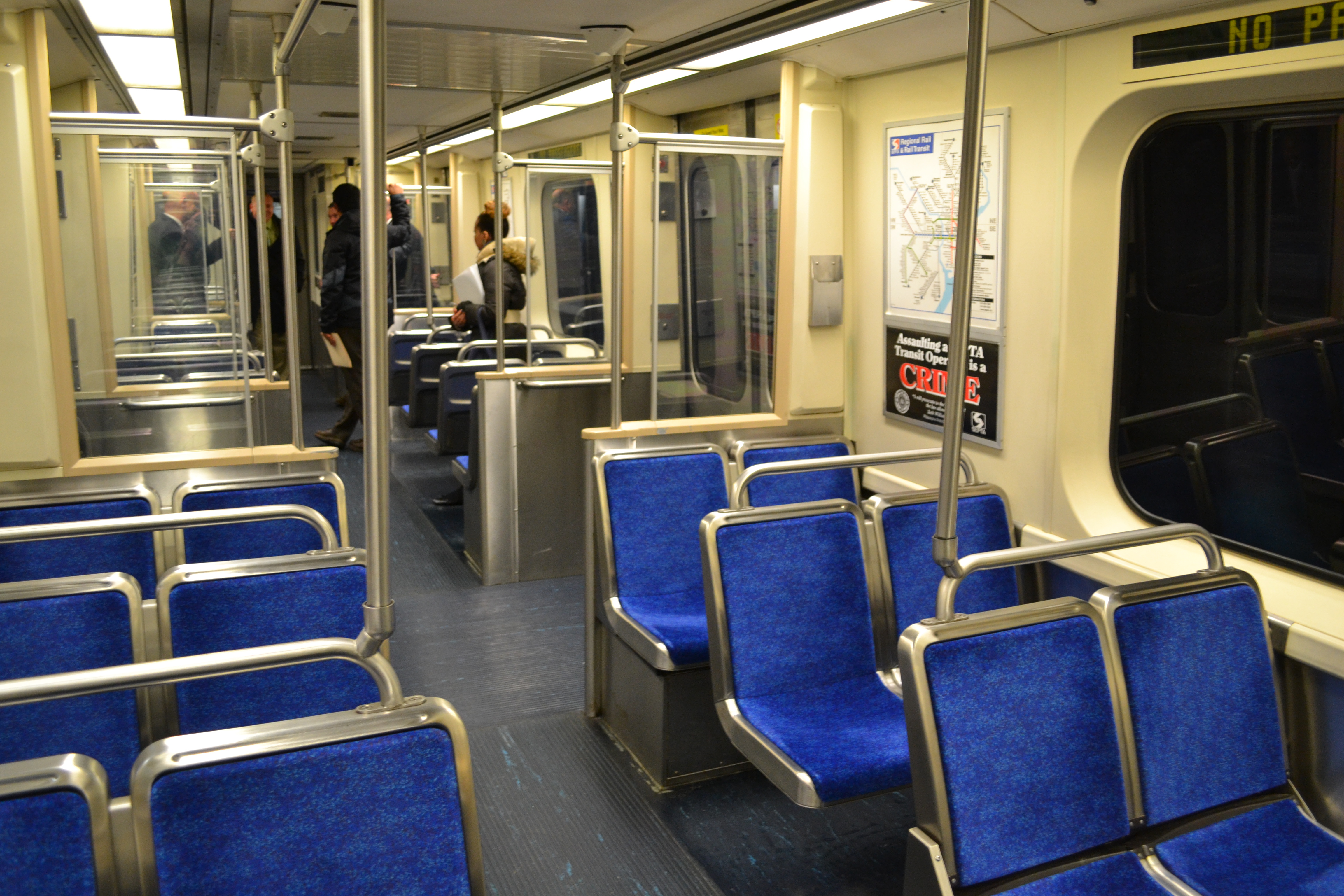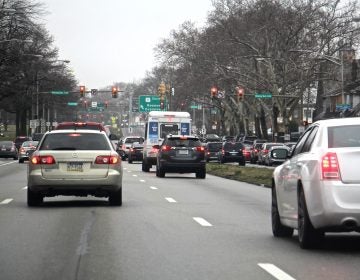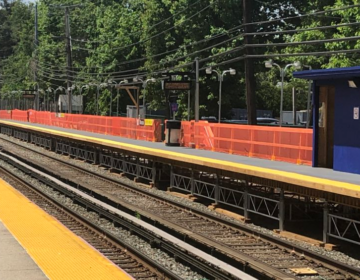Say goodbye to cloth seats on the El
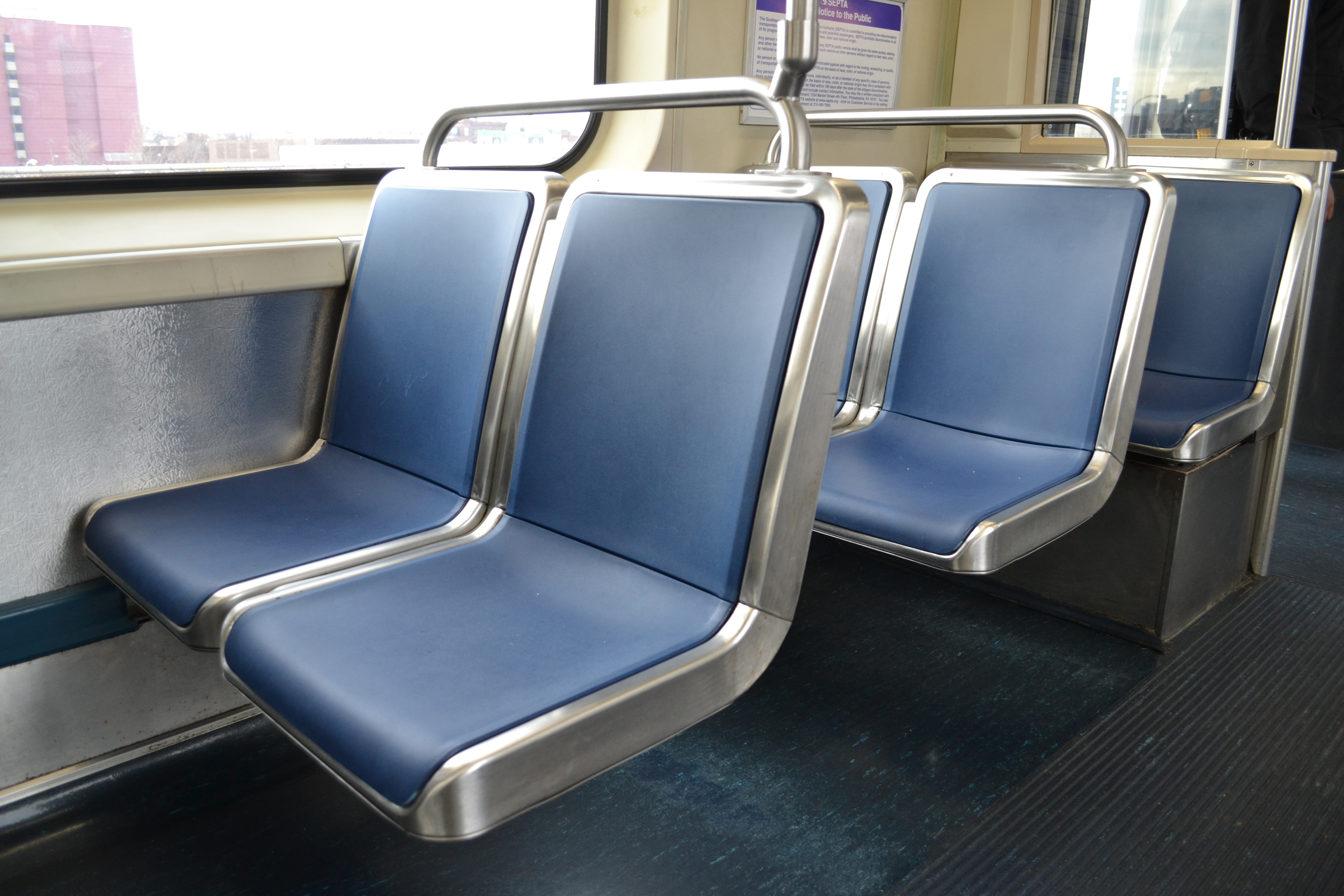
SEPTA’s Market Frankford Line (MFL) cars are on their way to getting an interior facelift. Over the next five years, SEPTA will replace the blue, fabric seat upholstery with blue, fiberglass seat panels. The overhead lighting – currently a fluorescent light that shines through yellowed panels – will be replaced with bright, white, energy-efficient LED bulbs.
“One of the top complaints we have on the vehicles is the cloth seating,” said Ron Hopkins, SEPTA’s assistant general manager. “A lot of people won’t even sit on the seats.”
SEPTA is working with American Seating, the company that manufactured the seats used on Broad Street Line (BSL) trains, to develop similar fiberglass seat panels that will be installed on MFL cars. Unlike the current seats, which stain easily and absorb liquids, the new seat panels will be easier to clean and more durable. The fiberglass seats do scratch, but SEPTA project engineer Joe Costello said that scratches and graffiti can be buffed out easily since the fiberglass color is consistent all the way through.
At $41 apiece, the fiberglass seats have a higher upfront cost than the cloth seats, which cost $23 to replace. But because the fiberglass seats are more durable, SEPTA expects to save as much as $1.7 million over the seats’ lifetime.
In addition, the seat panels will be more consistent with those on SEPTA’s BSL and trolley cars. At first the new seats will be a dull blue, but Costello said with time, wear will shine the seats as it has done on the other vehicles.
Passengers could start seeing the new seat panels this fall, but it will take years before all of the MFL cars are updated. SEPTA plans to install the new panels when it overhauls the vehicles. Since SEPTA overhauls its 218 subway cars at a rate of 44-per-year, the full process could take up to five years.
BUSES
At this time, SEPTA is not considering replacing the upholstery on its bus fleet. Because the buses get less passenger traffic than the MFL, those seats last a lot longer, Hopkins said. He added that passengers also tend to eat and drink (and therefore spill) on the MFL more so than they do on the buses. This adds to the longevity of the bus upholstery.
Vehicle lifetime is another factor. The expected lifetime of a MFL car is 25 years, nearly double the 12 to 14 year expected lifetime of SEPTA buses. Because the new, fiberglas seats will be in service on the MFL longer than they would be on a bus, SEPTA will get more for use out of the investment.
LIGHTING
As each car is overhauled it will also receive new energy-efficient lighting. The new lights are part of SEPTA’s ongoing sustainability efforts. The LED lights are expected to have a lifetime of about 80,000 hours, triple the lifetime of the current fluorescent lights, said SEPTA project engineer Irfan Ashraf.
The current lights on the MFL cars look yellow because the fluorescent lights yellow the panels placed in front of them, Ashraf explained. The new LED lights will not do that, so the light given off will remain a crisp white, rather than fade yellow.
I had the chance to ride on a prototype car this week, and the difference between the MFL car with the prototype LED lights and the car with the current, fluorescent light was drastic. The change, coupled with the new seating gave the car a completely different feel.
SEPTA plans to put out a bid for the lighting contract next month. Until the contract is finalized, it is unclear how much the lighting makeover will cost. SEPTA will save money by buying the lights in bulk and installing them in-house, and the contract will include a 12-year warranty.
WHYY is your source for fact-based, in-depth journalism and information. As a nonprofit organization, we rely on financial support from readers like you. Please give today.



